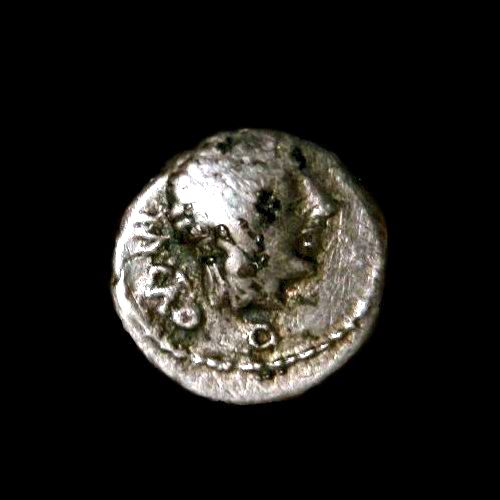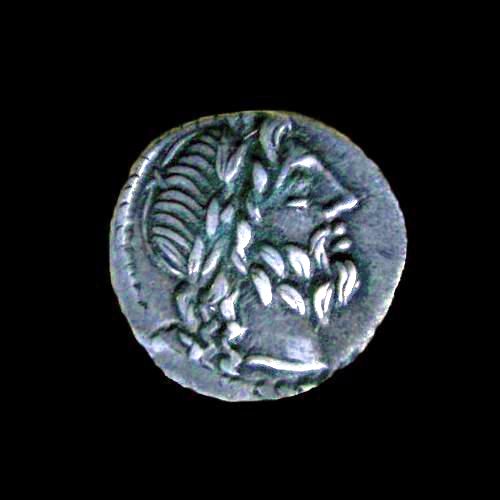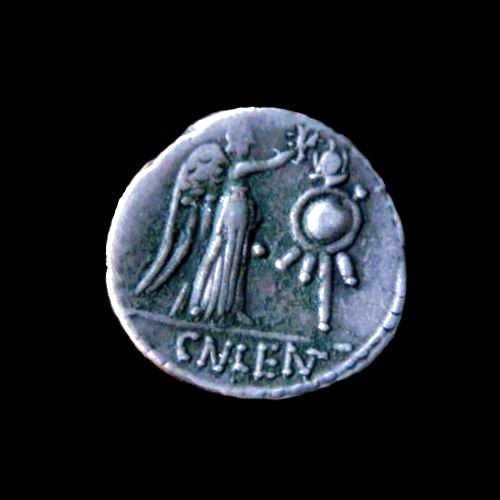

Silver quinarii were first minted around 211 BC. The coins are slightly smaller than victoriati and were valued at a half denarius. Quinarii did not seem to be very popular and were discontinued, however, the denomination was revived again during the first century BC and appeared in circulation until the 3rd century AD before Diocletian's reform of coinage. |
AR quinarius, c. 89 BC, Marcus Porcius Cato |
 |
 |
Marcus Porcius Cato Uticensis, also known as Cato the Younger (95 - 46 BC), was the great-grandson of M. Porcius Cato (Censorinus, or Cato the Elder 234 - 149 BC). The younger Cato also distinguished himself as an orator and became a prominent figure in the political and social life of the later republic. He was a strong opponent of Julius Caesar whose pardon he refused by committing suicide. The obverse type with the head of Liber associates the Porcii Catones with the Leges de Provocatione and perhaps recalls the ancient agricultural origins of the family. The reverse type may allude to Victoria Virgo to whom the elder Cato had a shrine built.Obv. Head of Liber right; behind M. CAO, below letter Q. |
AR quinarius, 88 BC, Gnaeus Cornelius Lentulus |
 |
 |
The gens Cornelia was one the most ancient an prominent Roman families during the republican era. Both patrician and plebeian families produced illustrious men. Infamous for their arrogance, the proud patrician Lentuli became prominent early in the fourth century BC when a Lucius Cornelius Lentulus, a senator, defied the Gauls (389 BC). His namesake obtained the consulship in 327 BC and became dictator seven years later. The moneyer Gnaeus Cornelius Lentulus Clodianus was consul in 72 BC but had less success when he commanded an army against Spartacus during the Servile war. The obverse type of this quinarius depicts Jupiter - one of the gods that was venerated by the gens Cornelia from very early on. This reverse type of the victoriatus was adopted in 101 BC and shows a winged Victory crowning a trophy.Obv. Laureate head of Jupiter. |
| |
Republican | Imperatorial | Imperial | Greek Imperial | Byzantine |